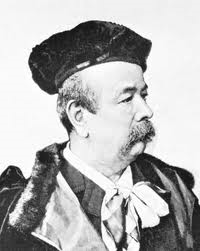
Charles Frederick Worth (13 October 1825 – 10 March 1895)
Charles Frederick Worth, the designer who dominated Parisian fashion in the latter half of the nineteenth century, was born in Bourne, Lincolnshire, England. As a young man, Worth worked as an apprentice and clerk for two London textile merchants. In addition to gaining a thorough knowledge of fabrics and the business of supplying dressmakers during this time, he also visited the National Gallery and other collections to study historic portraits. Elements of the sitters' dresses in these paintings would later provide inspiration for Worth's own designs, for both fashionable ensembles and masquerade costumes. Many clients traveled to Paris to purchase entire wardrobes from the House of Worth. The house flourished during the sons' tenure and into the 1920s. The great fashion dynasty finally came to an end in 1952 when Charles Frederick Worth's great-grandson, Jean-Charles (1881–1962), retired from the family business. Today the House of Worth no longer stands, however, the large number of surviving Worth garments are in the permanent collection of The Costume Institute, as well as in other institutions in the United States, is testament to Worth's immense popularity among wealthy American patrons, as well as European royalty and aristocrats.
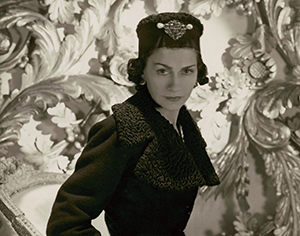
Coco Chanel (August 19, 1883-January 10, 1971
Famed fashion designer Coco Chanel was born Gabrielle Bonheur Chanel in Saumur, France. With her trademark suits and little black dresses, Coco Chanel created timeless designs that are still popular today. She herself became a much revered style icon known for her simple yet sophisticated outfits paired with great accessories, such as several strands of pearls. As Chanel once said,“luxury must be comfortable, otherwise it is not luxury.” Opening her first shop on Paris’s Rue Cambon in 1910, Chanel started out selling hats. She later added stores in Deauville and Biarritz and began making clothes. Her first taste of clothing success came from a dress she fashioned out of an old jersey on a chilly day. In response to the many people who asked about where she got the dress, she offered to make one for them.
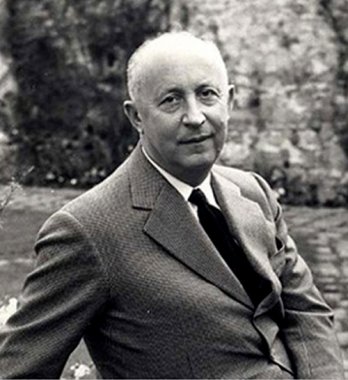
Christian Dior (Jan 21, 1905-October 24, 1957), Normandy, France
Fashion designer Christian Dior began his fashion career by selling sketches of hats to Parisians in 1935. He drew dresses too, but initially his hats were more in demand. Dior worked hard on his dress designs, though, and three years later he was employed by Robert Piguet. Dior was first to arrange licensed production of his designs. Furs, stockings, ties and perfume were manufactured in regional centers across the world, spreading his brand name quickly globally. When he died suddenly in Italy, in 1957, Yves Saint Laurent, Dior’s assistant of four years, took over as head designer. Upon his death in 1957, the House of Dior almost fell into disrepair but was quickly salvaged by the capable hands of Yves Saint-Laurent, who took Dior’s classic designs and made them softer and more wearable. Laurent ran the company until 1960, when Marc Bohan took over and made the collection slightly more conservative and reinvigorated the perfume side of the line. Throughout the ’80s and ’90s, the House of Dior went through several iterations, most notably being taken over by the controversial designer John Galliano. The newest designer, Raf Simons, has some mighty big shoes to fill, but based on his first collection, I have hope for Dior’s bright and gorgeous future.
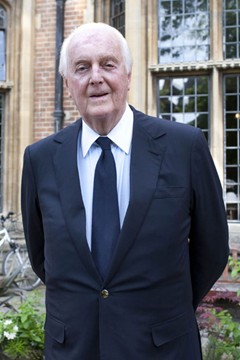
Hubert de Givenchy was born to an aristocratic family in Beauvais, France, on February 21, 1927. After attending art school, he worked for several important fashion designers in Paris. He opened his own design house in 1952 and was immediately praised for his chic, feminine designs. Givenchy's most famous couture client was actress Audrey Hepburn, who wore his designs in Breakfast at Tiffany's (1961), among other films.

Hanae Mori (January 8, 1926)
Began studying design, and in 1951 opened her first studio in Tokyo. Soon she became involved in the growing post-war Japanese movie industry and designed costumes for more than hundred films.
In 1965 she presented her first Collection abroad in New York, which was highly acclaimed as “East meets West”. Prestigious stores such as Neiman Marcus, Bergdorf Goodman and I. Magnin recognized the individuality of her designs and ordered her dresses.
In 1975, she presented her Collection in Paris, where in 1977 she opened her Haute Couture Maison. She has been the only Asian designer to be admitted as a member of La Chambre Syndicale de la Couture Parisienne for 27 years.Madame Mori’s achievements include costume designs for opera “Madame Butterfly” at La Scala in Milan in 1985, for “Elektra” at 1996 Salzburg Festival, and for "Arabella" at NEW NATIONAL THEATRE TOKYO in 2010. She also designed the costumes for Paris Opera Ballet’s “Cinderella”, directed by Rudolf Nureyev in 1986. She was named a “Officier de la Legion d’Honneur” in France in 2002, and received the “Order of Culture” in Japan in 1981.

Dominique Sirop
Sirop was born in France in 1956. He joined the House of Yves Saint Laurent at the age of 17. He then assists Hubert de Givenchy for 12 years. From 1989 until 1996, he designs for Hanae Mori. In 1989, he publishes a book on the Paquin Maison de Couture, followed in 1994 by a book on Jacqueline Delubac. In September 1996, Dominique Sirop decides that time has come for him to open his own Couture house; self financed DS. Dominique Sirop. He then lives in a dream-like romantic alley behind the Moulin Rouge. His19th century mansion includes a miniature theatre where the famous actor " Antoine " used to rehears. As recognition of his talent, not even 1 year after the creation of his house, the prestigious "Chambre Syndicale de la Haute Couture parisienne" decides in July 1997 to give him full membership.

Jean Louis Scherrer ( February 19, 1936- June 20, 2013)was born in Paris, France.He was interested in dancing, but was unable to continue his career after a fall so he began to sketch. He studied fashion design at the Chambre Syndicale de la Couture in Paris. In 1955, his talent took him to the house of DIOR, where he worked with Yves St.LAURENT. When St. Laurent took over the house of Dior after the master died, Scherror joined the house of Louis Feraud till 1961. He set up his own house in 1962. His first collection was shown in the vaulted cellar of a wine dealer.

Jean Paul Gaultier (April 20, 1952) in Arcueil, Val-de-Marne, France Gaultier never received formal training as a designer. Instead, he started sending sketches to famous couture stylists at an early age. Pierre Cardin was impressed by his talent and hired him as an assistant in 1970. Afterwards he worked with Jacques Esterel in 1971 and Jean Patou later that year, then returning to manage the Pierre Cardin boutique in Manila for a year in 1974.His first individual collection was released in 1976 and his characteristic irreverent style dates from 1981, and he has long been known as the enfant terrible of French fashion. Many of Gaultier's following collections have been based on street wear, focusing on popular culture, whereas his Haute Couture collections, are very formal yet at the same time unusual and playful.. In 1985 he introduced man-skirts, and produced sculptured costumes for Madonna during the nineties, starting with her infamous cone bra for her 1990 Blond Ambition Tour, and designed the wardrobe for her 2006 Confessions Tour.
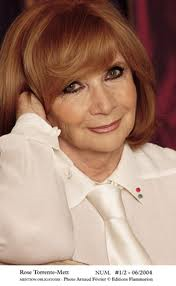
Rose Torrente-Mett
Rose Torrente-Mett was born in France in the 1940's and is from a famous fashion family. One set of grandparents were tanners: her genetic inheritance from them was a taste for fine materials. Her grandmother on the other side of the family was a lingerie seamstress and corset maker. Her brother is Ted Lapidus, founder of the Lapidus couture house which is now run by Rose's nephew Olivier Lapidus. Initially Rose worked for her brother and after several years she started up on her own in 1968. In 1971, she was invited to become a member of the Chambre Syndicale de la Haute Couture. She was the only woman couturier as member of the Chambre, until the arrival of her friend HanaeMori.The Haute Couture show for Fall 2004 presented by Julien Fournie, was shown in Paris in July 2004, and a gown from the show is pictured on the right. The beautiful clothes were a resounding success. Rose Torrente-Mett has published a tell-all book "Le Droite Fil: Souvenirs de Haute Couture". This book recounts her amazing story as the internationally acclaimed queen of haute couture, and founder of her legendary house.